In the world of luxury furniture, chairs hold a special place as both functional pieces and works of art. From exquisite materials and intricate designs to impeccable craftsmanship and historical significance, the realm of high-end chairs is a testament to the fusion of style, comfort, and opulence.
In this article, we will explore the realm of luxury seating and delve into the realm of the 10 most expensive chairs in the world. Brace yourself for a journey through the realms of elegance and extravagance, where chairs transcend their utilitarian purpose and become symbols of refined taste and unparalleled craftsmanship.
- Throne of “Water Wave Cloud Dragon” Throne with Eight Treasures Cloud Bat Pattern, Emperor Qianlong, China – HK$85,780,000
- An Imperial Red Sandalwood Throne with Cloud and Dragon Patterns, Qianlong, Qing Dynasty, China – HK$83,348,837
- Chinese Ming Dynasty Huanghuali Folding Chair – HK$81,026,838
- Chinese Ming Dynasty 17th Century Huanghuali Round-Back Chair – HK$75,078,120
- Chinese Qing Dynasty Qianlong Red Sandalwood Carved Passiflora “Celebrating Longevity” Throne – HK$70,465,686
- Chinese 16th/17th-century Huanghuali Folding Chair with dragon pattern – HK$69,470,911
- Qing Qianlong Red Sandalwood Openwork Baroque Throne – HK$48,088,411
- Chinese Qing Kangxi painted black lacquer and gold carved dragon chair – HK$43,076,050
- Four official hats and chairs of Huanghuali in the early Ming Dynasty, China – HK$32,535,144
- A complete set of six Huanghuali rose chairs in the late Ming Dynasty – HK$29,900,000
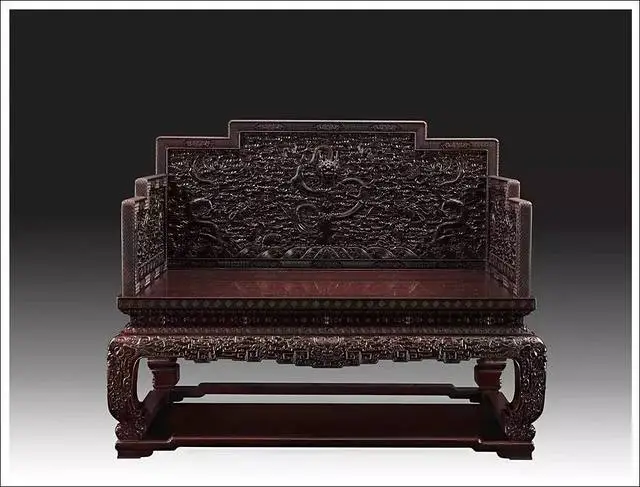
Throne of “Water Wave Cloud Dragon” Throne with Eight Treasures Cloud Bat Pattern, Emperor Qianlong, China – HK$85,780,000
Throne of “Water Wave Cloud Dragon” Throne with Eight Treasures Cloud Bat Pattern, Emperor Qianlong, China is the most expensive chair in the world. The “Throne of Water Wave Cloud Dragon” is an extraordinary and iconic chair that holds immense historical and cultural significance.
This magnificent throne, adorned with intricate craftsmanship and symbolic motifs, was originally commissioned for Emperor Qianlong of China during the Qing Dynasty. It is a testament to the opulence and grandeur of the imperial court. The throne’s name, derived from its design elements, beautifully captures its regal essence.
The “Water Wave Cloud Dragon” motif represents power and auspiciousness, while the “Eight Treasures Cloud Bat Pattern” symbolizes prosperity and good fortune.
The craftsmanship exhibited in this exceptional piece is unparalleled, with meticulous attention to detail and the use of luxurious materials. The “Throne of Water Wave Cloud Dragon” stands as a mesmerizing embodiment of Chinese heritage, a masterpiece that exudes majesty and reverence.
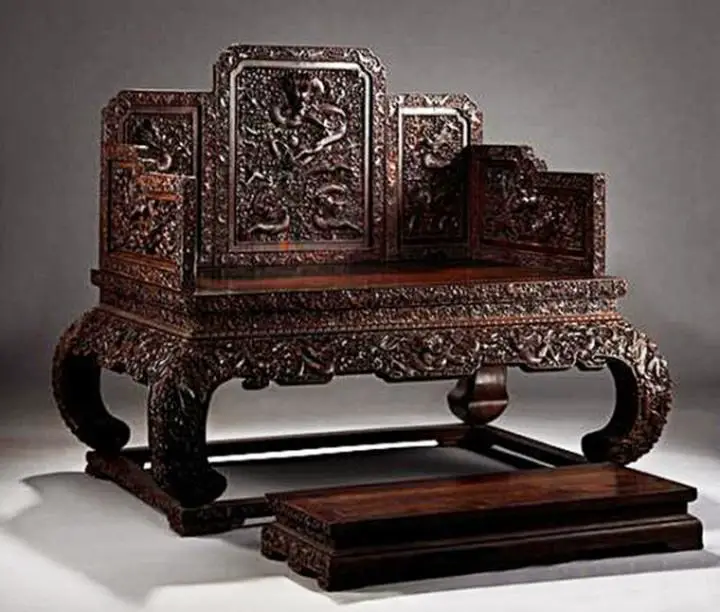
An Imperial Red Sandalwood Throne with Cloud and Dragon Patterns, Qianlong, Qing Dynasty, China – HK$83,348,837
An Imperial Red Sandalwood Throne with Cloud and Dragon Patterns, Qianlong, Qing Dynasty, China is the 2nd most expensive chair in the world. The Imperial Red Sandalwood Throne with Cloud and Dragon Patterns is a captivating testament to the grandeur and artistic mastery of the Qing Dynasty in China.
Commissioned during the reign of Emperor Qianlong, this resplendent throne showcases the exceptional craftsmanship and attention to detail for which the period is renowned.
Carved from rare and precious red sandalwood, the throne exudes an aura of elegance and sophistication. Its intricate cloud and dragon patterns, meticulously etched and adorned with gold accents, symbolize celestial power and imperial authority.
The throne’s exquisite design reflects the fusion of artistic creativity and cultural symbolism. It stands as a remarkable example of the craftsmanship of the Qing Dynasty, a cherished artifact that transports us back to an era of imperial opulence and artistic excellence.
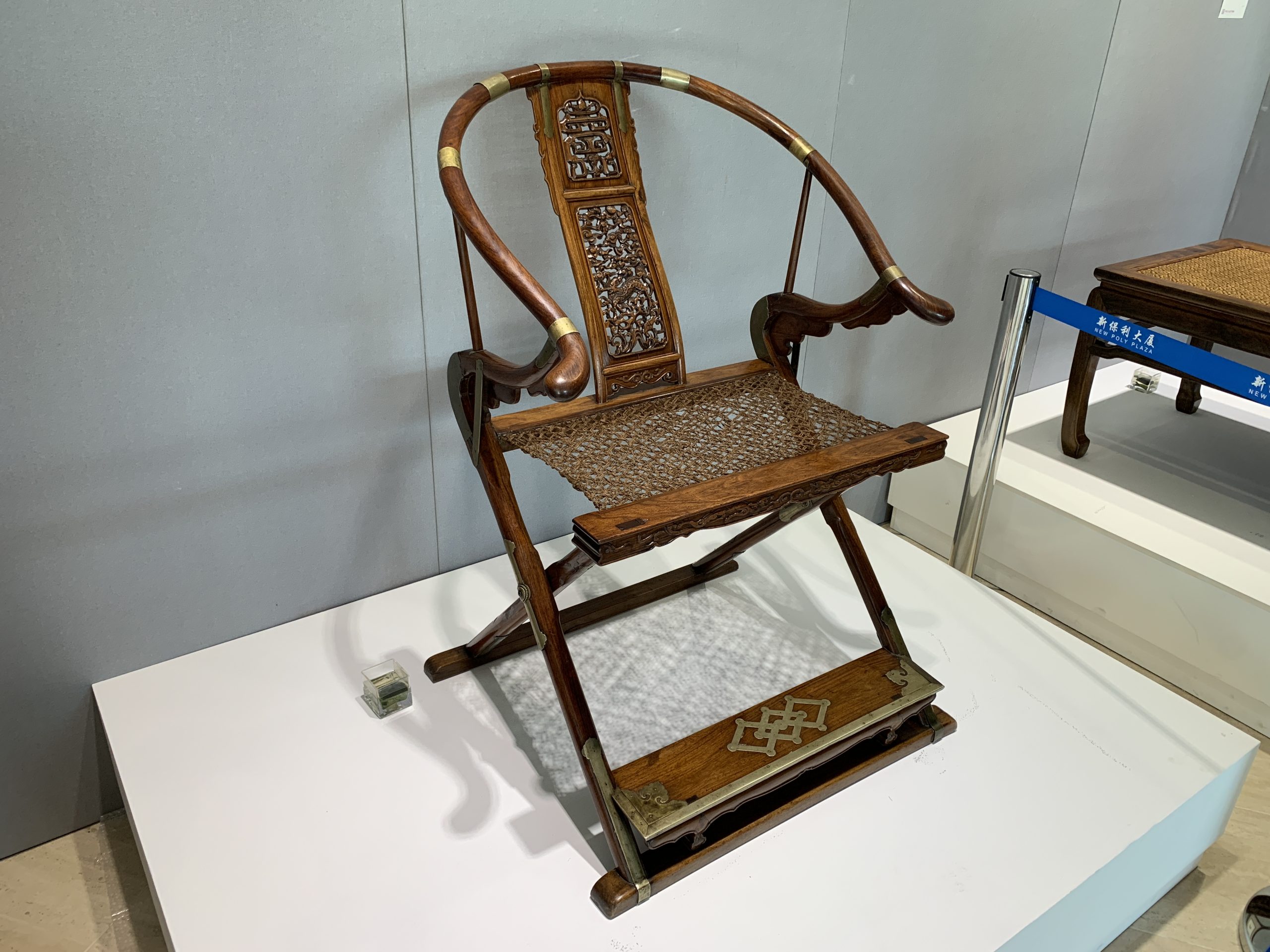
Chinese Ming Dynasty Huanghuali Folding Chair – HK$81,026,838
Chinese Ming Dynasty Huanghuali Folding Chair is the 3rd most expensive chair in the world. The Chinese Ming Dynasty Huanghuali Folding Chair is a remarkable piece of furniture that encapsulates the elegance and ingenuity of the Ming Dynasty in China.
Crafted from Huanghuali wood, a rare and highly prized material known for its rich, warm tones and distinctive grain patterns, this folding chair is a true masterpiece of woodworking.
The chair’s design showcases a harmonious balance of form and function, with its intricate joinery and expertly carved details. The backrest features a graceful curve and delicate openwork patterns, while the seat is designed for comfort and relaxation.
Folding chairs were particularly valued during the Ming Dynasty for their versatility and portability, making them a popular choice for imperial officials and scholars.
The Ming Dynasty Huanghuali Folding Chair stands as a testament to the craftsmanship and artistic excellence of the era, embodying both beauty and practicality in its timeless design.
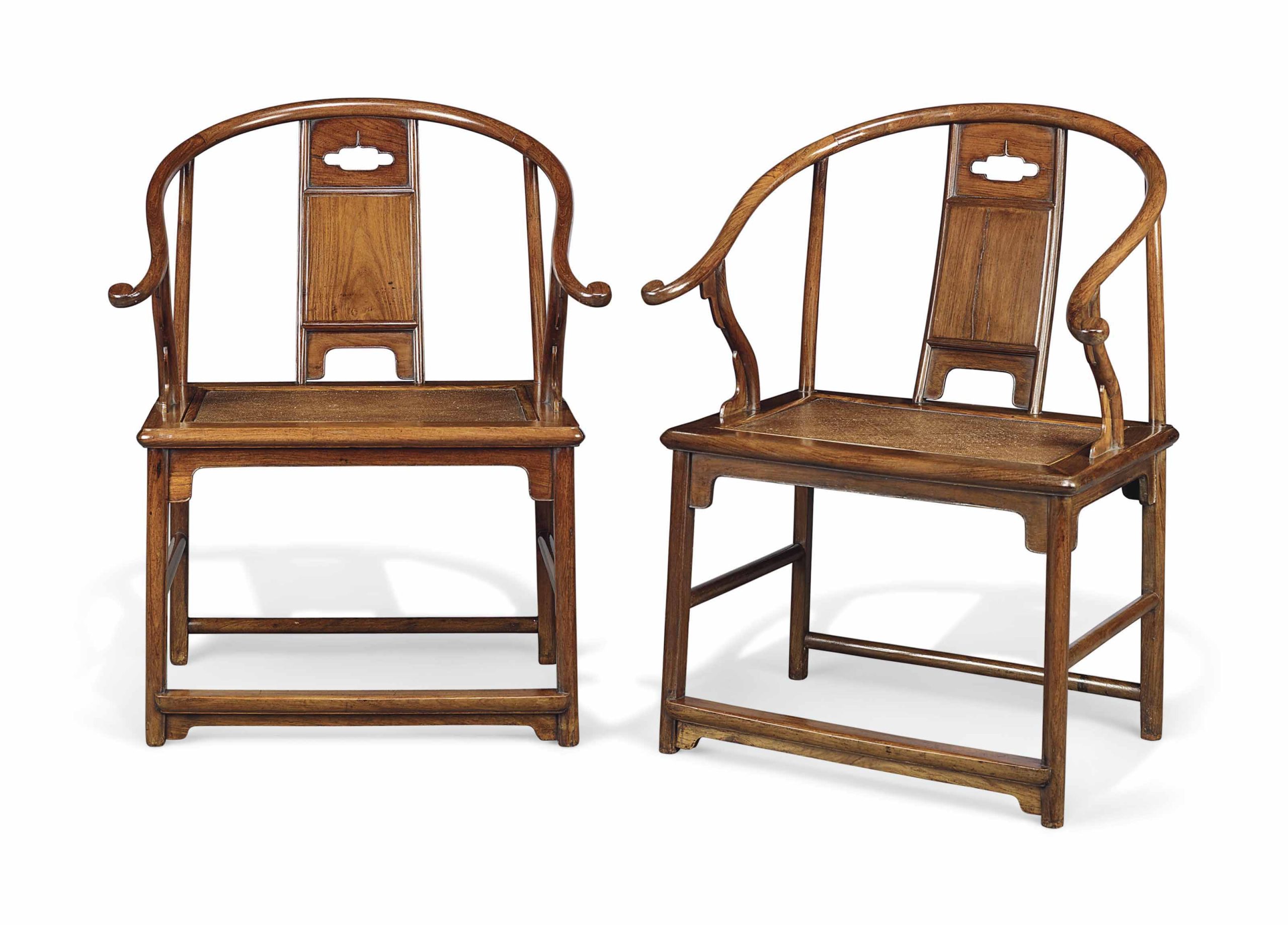
Chinese Ming Dynasty 17th Century Huanghuali Round-Back Chair – HK$75,078,120
Chinese Ming Dynasty 17th Century Huanghuali Round-Back Chair is the 4th most expensive chair in the world. The Chinese Ming Dynasty 17th Century Huanghuali Round-Back Chair is a stunning representation of the exquisite craftsmanship and artistic finesse of the Ming Dynasty in China.
Constructed from the highly prized Huanghuali wood, renowned for its lustrous golden hue and distinct grain patterns, this round-back chair showcases the mastery of Ming-era furniture makers.
The chair’s elegant and curved backrest is meticulously carved with intricate motifs, depicting auspicious symbols and nature-inspired designs. The seat is expertly woven with a cane or silk fabric, providing both comfort and visual appeal.
The chair’s sturdy construction and refined details exemplify the Ming Dynasty’s dedication to both functionality and aesthetic beauty. This Huanghuali Round-Back Chair is a treasured artifact, embodying the elegance and timeless allure of Chinese furniture from the 17th-century Ming Dynasty.
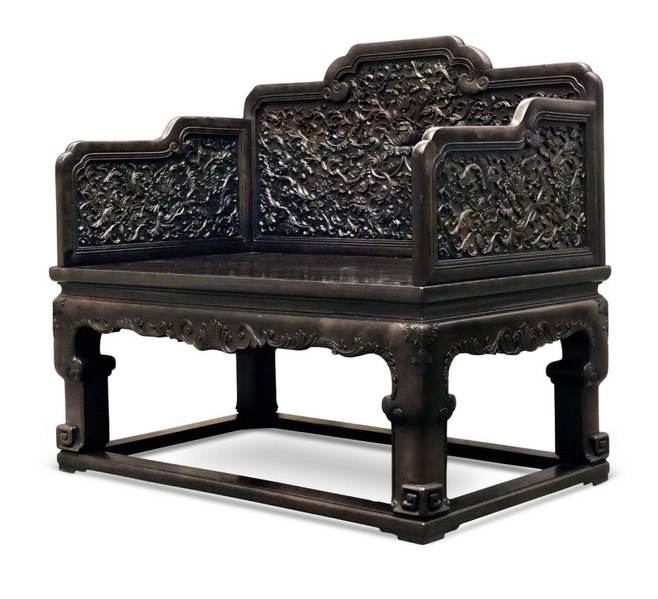
Chinese Qing Dynasty Qianlong Red Sandalwood Carved Passiflora “Celebrating Longevity” Throne – HK$70,465,686
Chinese Qing Dynasty Qianlong Red Sandalwood Carved Passiflora “Celebrating Longevity” Throne is the 5th most expensive chair in the world. The Chinese Qing Dynasty Qianlong Red Sandalwood Carved Passiflora “Celebrating Longevity” Throne is a magnificent testament to the opulence and artistic excellence of the Qing Dynasty in China.
Commissioned during the reign of Emperor Qianlong, this intricately carved throne exemplifies the grandeur and sophistication of imperial furniture. Constructed from rare red sandalwood, prized for its rich color and natural beauty, the throne showcases an exquisite display of craftsmanship.
The backrest is adorned with intricate carvings of passiflora, a symbol of longevity and prosperity, delicately intertwined with auspicious motifs. The seat and armrests are meticulously carved with detailed patterns, evoking a sense of luxury and regality.
The “Celebrating Longevity” theme represented in the throne’s design reflects the reverence for long life and the emperor’s desire for prosperity and harmony. This remarkable throne stands as a testament to the artistic legacy of the Qing Dynasty, a tangible representation of China’s imperial heritage and the mastery of its skilled craftsmen.
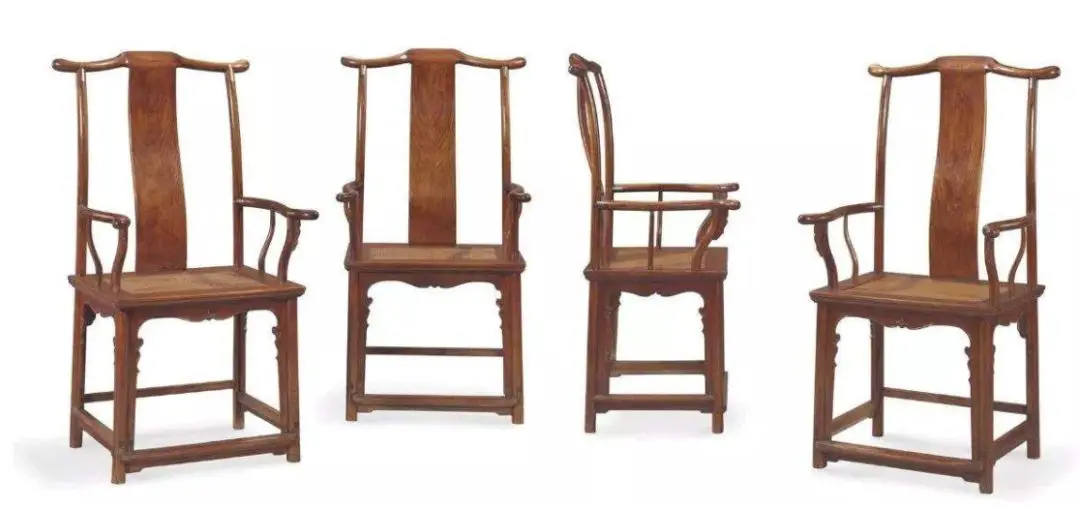
Chinese 16th/17th-century Huanghuali Folding Chair with dragon pattern – HK$69,470,911
Chinese 16th/17th-century Huanghuali Folding Chair with dragon pattern is the 6th most expensive chair in the world. The Chinese 16th/17th-century Huanghuali Folding Chair with Dragon Pattern is a remarkable piece that showcases the artistry and craftsmanship of the era.
Made from the coveted Huanghuali wood, known for its exquisite grain patterns and warm tones, this folding chair exemplifies the elegance and functionality of Ming Dynasty furniture.
The chair’s backrest features a captivating dragon pattern, intricately carved with meticulous attention to detail. Dragons hold immense significance in Chinese culture, representing power, strength, and good fortune.
The folding mechanism allows for easy portability and storage, making it a practical choice for both imperial officials and scholars. The combination of the chair’s graceful design, the dragon’s symbolic presence, and the exceptional use of Huanghuali wood make this folding chair a true treasure, reflecting the legacy of Chinese craftsmanship and the cultural significance of the Ming Dynasty.
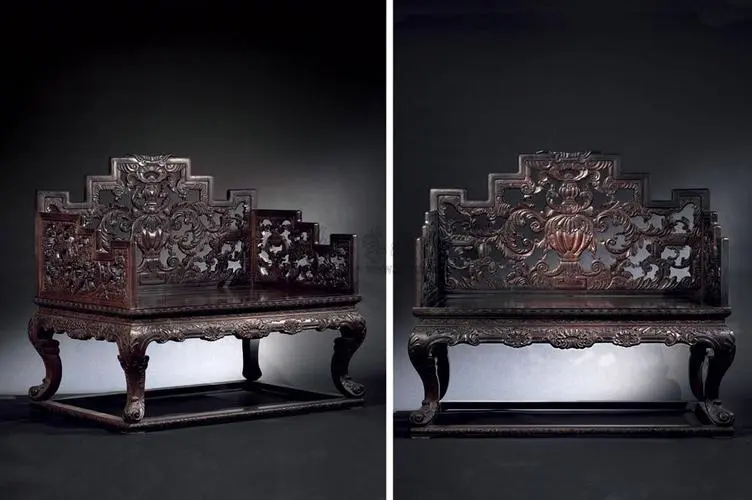
Qing Qianlong Red Sandalwood Openwork Baroque Throne – HK$48,088,411
Qing Qianlong Red Sandalwood Openwork Baroque Throne is the 7th most expensive chair in the world. The Qing Qianlong Red Sandalwood Openwork Baroque Throne is a breathtaking masterpiece that epitomizes the grandeur and artistic prowess of the Qing Dynasty’s Qianlong era.
This opulent throne, carved from the rare and highly sought-after red sandalwood, showcases the intricate and ornate baroque style that characterized the period. The throne’s openwork design features elaborate motifs, including swirling acanthus leaves, intricate scrolls, and delicate floral patterns, meticulously carved with remarkable precision.
The majestic backrest, adorned with openwork panels, exudes a sense of regality and sophistication. The use of red sandalwood adds to the throne’s allure, with its deep red hues and captivating grain patterns.
This remarkable masterpiece serves as a tangible testament to the splendor of the Qing Dynasty, a true marvel of craftsmanship and design that has withstood the test of time.
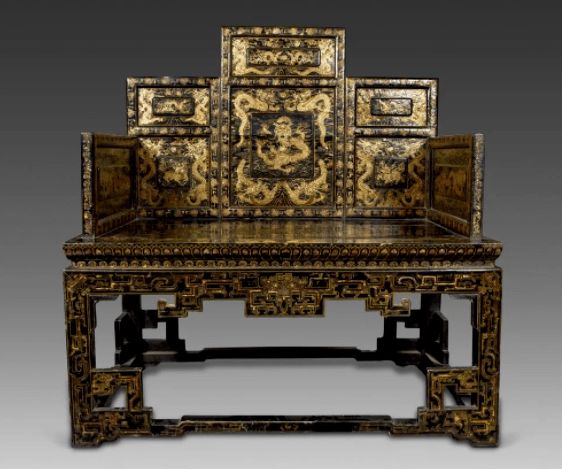
Chinese Qing Kangxi painted black lacquer and gold carved dragon chair – HK$43,076,050
Chinese Qing Kangxi painted black lacquer and gold carved dragon chair is the 8th most expensive chair in the world. The Chinese Qing Kangxi Painted Black Lacquer and Gold Carved Dragon Chair is a captivating example of the artistic ingenuity and cultural richness of the Qing Dynasty during the Kangxi reign.
This chair is a remarkable fusion of meticulous craftsmanship, exquisite painting, and intricate carving. The black lacquer finish serves as a striking backdrop for the vibrant gold-painted dragon motifs that adorn the chair’s frame.
The dragons, symbols of power, prosperity, and good fortune in Chinese culture, are intricately carved with intricate details, showcasing the mastery of the artisans involved.
The chair’s design exhibits a harmonious balance of elegance and grandeur, with its gracefully curved backrest and sturdy structure. This extraordinary piece represents the cultural heritage of the Qing Dynasty, capturing the essence of Chinese craftsmanship and the rich symbolism embedded in its artistry.
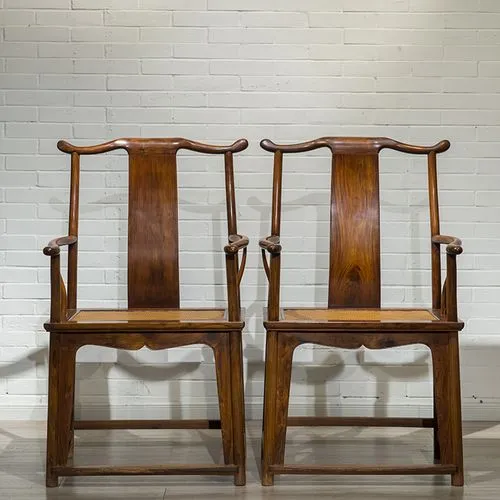
Four official hats and chairs of Huanghuali in the early Ming Dynasty, China – HK$32,535,144
Four official hats and chairs of Huanghuali in the early Ming Dynasty, China is the 9th most expensive chair in the world. The four official hats and chairs of Huanghuali in the early Ming Dynasty, China, stand as magnificent examples of the cultural and historical significance attached to furniture during that era.
Crafted from the coveted Huanghuali wood, known for its rich golden hue and distinct grain patterns, these hats and chairs were reserved for high-ranking officials and dignitaries.
Each hat and chair combination represents a different rank and position within the imperial court, reflecting the hierarchical structure of Ming Dynasty society. The intricate carvings and delicate craftsmanship on the chairs highlight the attention to detail and artistic finesse of the period. These pieces not only served a functional purpose but also showcased the prestige and authority associated with the individuals who occupied them.
The combination of noble material, skillful workmanship, and historical significance makes the four official hats and chairs of Huanghuali a remarkable testament to the cultural heritage and opulence of the early Ming Dynasty in China.
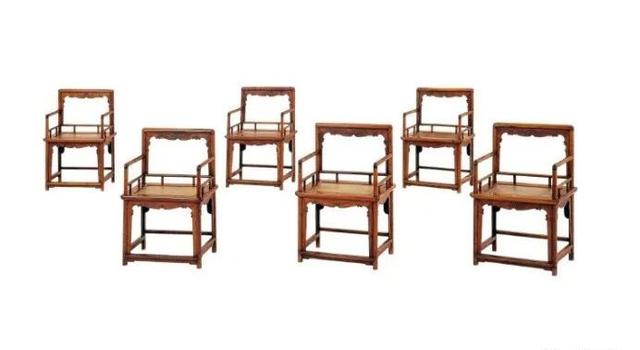
A complete set of six Huanghuali rose chairs in the late Ming Dynasty – HK$29,900,000
A complete set of six Huanghuali rose chairs in the late Ming Dynasty is the 10th most expensive chair in the world. A complete set of six Huanghuali rose chairs from the late Ming Dynasty represents a remarkable ensemble of furniture that embodies the elegance and refinement of the era.
Constructed from the sought-after Huanghuali wood, renowned for its exquisite color and grain, these chairs exemplify the craftsmanship and aesthetic sensibility of Ming Dynasty furniture makers.
Each chair features a distinct rose-shaped backrest, intricately carved with delicate details and graceful curves. The seats are skillfully woven with a cane or silk fabric, providing comfort and adding to the overall visual appeal.
The set of six chairs offers both functionality and a sense of unity, making it ideal for formal dining or ceremonial gatherings. This complete collection of Huanghuali rose chairs not only reflects the impeccable taste and luxurious lifestyle of the late Ming Dynasty but also serves as a testament to the enduring beauty and craftsmanship of Chinese furniture design.
Frequently Asked Questions
What is the expensive iconic chair?
One of the most expensive and iconic chairs in the world is the “Barcelona Chair” designed by Ludwig Mies van der Rohe and Lilly Reich. This modernist masterpiece, created in 1929, has become an icon of 20th-century design and is widely recognized for its sleek and timeless aesthetic.
The Barcelona Chair features a stainless steel frame with leather upholstery, exuding elegance, and sophistication. Its clean lines, geometric form, and luxurious materials have made it a symbol of both comfort and style.
The chair’s enduring popularity and its status as a design classic have contributed to its high value in the market, making it a sought-after collector’s item and a symbol of refined taste and discerning craftsmanship.
What is the most expensive furniture in the world?
The most expensive piece of furniture ever sold is the “Dragons Chair” created by Irish designer Eileen Gray. This exceptional chair, dating back to 1917-1919, was crafted from lacquered wood and featured sculpted armrests and a distinct dragon motif.
In 2009, the Dragons Chair was sold at an auction for a staggering $28 million, making it the most expensive furniture item to date. Its high price can be attributed to its rarity, historical significance, and the artistic vision of its creator.
The Dragons Chair is not only a functional piece of furniture but also a true work of art that represents the pinnacle of craftsmanship and design. Its uniqueness, combined with the allure of Eileen Gray’s legacy, contributed to its record-breaking price.
What is the most famous chair in the world?
The most famous chair in the world is arguably the “Wishbone Chair,” also known as the “Y Chair” or “CH24 Chair,” designed by Danish furniture designer Hans J. Wegner. Created in 1949, this iconic chair has become an enduring symbol of Danish design and craftsmanship.
The Wishbone Chair features a distinctive Y-shaped backrest and a woven paper cord seat, combining organic forms with functional simplicity. Its timeless design and ergonomic comfort have made it a beloved choice for both residential and commercial settings.
The Wishbone Chair’s widespread popularity, enduring appeal, and recognition in the design world have solidified its status as one of the most famous and influential chairs of all time.
What is the famous uncomfortable chair?
One of the most famous uncomfortable chairs in the world is the “Barcelona Chair” designed by Ludwig Mies van der Rohe and Lilly Reich. While the Barcelona Chair is highly regarded for its iconic design and visual appeal, it is often criticized for its lack of comfort.
The chair features a rigid stainless steel frame and leather upholstery, which some people find too firm and unforgiving for extended periods of sitting. However, it is worth noting that the Barcelona Chair was not intended to be a lounging chair but rather a sleek and minimalist piece of furniture for use in lobbies and reception areas.
Its emphasis on aesthetic elegance and modernist principles often takes precedence over comfort, making it a notable example of a famous chair that prioritizes form over function.
Why is the dragon chair so expensive?
The “Dragon Chair” is often associated with highly ornate, decorative, and intricately designed chairs that may be considered expensive for several reasons:
- Artistry and Craftsmanship: Dragon Chairs are often handcrafted by skilled artisans who put a significant amount of time and effort into their creation. The level of craftsmanship and attention to detail can be extraordinary, which adds to the chair’s value.
- Intricate Design: Dragon Chairs are known for their ornate and detailed design, often featuring dragon motifs. The intricate carvings and decorations can be labor-intensive and require a high degree of skill to produce.
- Quality Materials: Expensive Dragon Chairs are typically made from high-quality materials, such as fine woods like teak, mahogany, or rosewood, and may be adorned with precious metals or semi-precious gemstones. The choice of materials contributes to their cost.
- Limited Production: Some Dragon Chairs are produced in limited quantities, or they may be custom-made for individual clients. Limited production can drive up the price due to exclusivity.
- Historical or Cultural Significance: Some Dragon Chairs may be antique or have historical or cultural significance, which can significantly increase their value. They may be considered collectible items.
- Collectibility: Dragon Chairs are often sought after by collectors of fine furniture and Asian art. Collectors are willing to pay a premium for rare or exceptional pieces.
- Art Market and Auctions: Dragon Chairs, especially antique ones, may be sold through art auctions and galleries. These platforms can further increase the price as buyers compete for unique and valuable pieces.
- Demand: If there is a high demand for Dragon Chairs, it can drive up prices, especially for those produced by renowned artisans or workshops.
- Condition: The condition of the chair also affects its value. Well-preserved, well-maintained, and original Dragon Chairs are more valuable than those in poor condition or that have been heavily restored.
- Provenance: Provenance, which is the documented history of a chair, can also affect its price. If a Dragon Chair has a known history or has been owned by a famous or historically significant person, it can increase in value.
It’s important to note that not all Dragon Chairs are expensive. The cost can vary widely, from affordable reproductions to high-end, one-of-a-kind, and historically significant pieces. When evaluating the price of a Dragon Chair, it’s essential to consider the specific factors mentioned above, as well as market conditions and trends in the world of fine furniture and art.
How to reupholster a chair?
Reupholstering a chair can be a rewarding DIY project, allowing you to refresh the look of a piece of furniture. Here are the general steps to reupholster a chair:
Materials You’ll Need:
- Screwdriver or pliers (for removing staples or tacks)
- Upholstery fabric
- Upholstery foam (if needed)
- Upholstery batting
- Staple gun and staples
- Scissors or fabric cutter
- Sewing machine (if re-sewing cushion covers)
- Flathead screwdriver or upholstery tacks (if using)
Step-by-Step Guide:
- Prepare Your Workspace:
- Find a well-lit, clean, and well-ventilated area to work on your chair.
- Place a drop cloth or old sheet to protect your work surface.
- Remove the Old Upholstery:
- Flip the chair upside down and use a screwdriver or pliers to remove the staples or tacks holding the old fabric in place.
- Carefully remove the old fabric and padding, noting the order of layers and their placement.
- Inspect the Chair:
- Examine the chair’s frame for any damage or loose parts. Repair or reinforce as needed.
- Replace Padding (if necessary):
- If the chair’s padding is worn or damaged, add new upholstery foam or batting as needed. Cut the foam to size and secure it with adhesive or glue.
- Cut the New Fabric:
- Lay the new upholstery fabric on a flat surface and place the old fabric pieces on top as templates. Cut the new fabric to match the old pieces, leaving extra material for stretching and stapling.
- Attach the Fabric:
- Begin by attaching the fabric to the underside of the chair. Secure it in place using a staple gun. Start in the center and work your way out, pulling the fabric taut as you go.
- For corners and curves, make small pleats or folds to ensure a snug fit.
- Continue stapling until the fabric is securely attached.
- Reattach the Padding (if removed):
- If you had to remove any padding or batting, replace it with new material. Secure it in place with adhesive or glue.
- Finish the Edges:
- Fold and staple the fabric neatly along the edges of the chair to create clean, finished seams.
- Create and Attach Cushion Covers (if needed):
- If your chair has cushions, you may need to sew new cushion covers. Cut the fabric to the appropriate size and sew a simple envelope-style cover. Slide the cushion into the cover and attach it to the chair.
- Secure Upholstery Tacks (if using):
- If you prefer a decorative look, use upholstery tacks to secure the fabric along the seams and edges. A flathead screwdriver can help you push the tacks into place.
- Trim Excess Fabric:
- Trim any excess fabric and batting to create a neat and clean finish.
- Inspect and Clean:
- Carefully examine your reupholstered chair for any loose fabric or staples. Trim any excess and make any necessary adjustments.
- Clean the chair to remove any dust, debris, or adhesive residue.
Reupholstering a chair can be a time-consuming process, so be patient and take your time. If you’re new to upholstery, it might be helpful to watch online tutorials or seek guidance from a more experienced individual. Additionally, choose a fabric that complements your chair’s design and your interior decor for a fresh, personalized look.
How much is an x chair?
The price of an “X Chair” can vary widely depending on the specific model, features, and where you purchase it. “X Chair” is a brand that offers a range of ergonomic office chairs designed for comfort and support during long hours of work. The price can depend on factors like the chair’s size, materials, ergonomic features, and any additional options.
As of my last knowledge update in September 2021, X Chair offered a range of models, and the prices typically started at around $700 to $800 for their entry-level chairs. However, more advanced models with additional features, such as massage or heating options, could be priced significantly higher, often in the $1,000 to $2,000 range.
It’s important to check the X Chair website or contact authorized dealers or retailers for the most up-to-date pricing and availability, as prices may have changed since my last update. Additionally, consider looking for promotions, discounts, or sales events that may make the chairs more affordable. Keep in mind that investing in a quality ergonomic chair can provide long-term comfort and support, which can be beneficial if you spend extended periods sitting at a desk.
How much to reupholster a chair?
The cost to reupholster a chair can vary widely based on several factors, including the type of chair, its size, the fabric you choose, your location, and whether you do the work yourself or hire a professional upholsterer. Here are some general cost considerations:
- Chair Type: The size and style of the chair will affect the cost. A small dining chair will generally cost less to reupholster than a large, intricately designed armchair or a recliner.
- Fabric Choice: The cost of fabric can vary significantly. High-quality, designer upholstery fabric will be more expensive than basic or clearance fabric options. The amount of fabric required is also determined by the chair’s size and the fabric pattern’s repeat.
- Labor Costs: If you choose to hire a professional upholsterer, the labor costs will be a significant part of the overall price. Labor costs can vary depending on the upholsterer’s experience, location, and the complexity of the job.
- Additional Materials: Depending on the chair’s condition, you may need to replace or repair padding, foam, or other materials. This can add to the overall cost.
- DIY vs. Professional: Reupholstering a chair yourself can save on labor costs but may still require expenses for materials and tools if you don’t already have them.
- Location: The cost of living in your area can affect the prices for labor and materials. Reupholstering a chair in a major city may be more expensive than in a rural area.
As a rough estimate, reupholstering a basic dining chair yourself might cost anywhere from $50 to $150 for materials (fabric, foam, batting, staples) and possibly additional tools if you don’t already own them. Hiring a professional to reupholster a dining chair could cost around $100 to $300 or more per chair, including labor and materials.
For larger or more complex chairs, especially antique or designer chairs, the cost to reupholster can be significantly higher, potentially ranging from a few hundred dollars to over a thousand dollars per chair when hiring a professional. Prices can be even higher if you choose premium materials and intricate designs.
To get an accurate estimate for reupholstering your specific chair, it’s advisable to contact local upholsterers for quotes, taking into account all the factors mentioned above. They can assess the chair’s condition and provide a more precise cost estimate for the project.
Why are high end chairs so expensive?
High-end chairs can be expensive for several reasons, and the cost is often justified by a combination of factors related to design, craftsmanship, materials, and brand reputation. Here are some key reasons why high-end chairs may have a higher price tag:
- Design and Innovation: High-end chairs are often designed by renowned designers or architects who invest time and creativity in crafting unique and innovative designs. The design process may involve extensive research, prototyping, and attention to detail, contributing to the overall cost.
- Craftsmanship: Quality craftsmanship is a hallmark of high-end furniture. Skilled artisans may spend a significant amount of time handcrafting each piece, ensuring precision, durability, and attention to detail. This level of craftsmanship can significantly increase the labor costs associated with the chair.
- Materials: High-end chairs often use premium and exotic materials, such as rare woods, top-grade leather, metals, and high-quality fabrics. The cost of these materials can be substantial, contributing to the overall expense of the chair.
- Customization: Some high-end chairs offer customization options, allowing buyers to choose specific finishes, colors, or materials according to their preferences. Customization adds to the complexity of production and may require more attention from craftsmen, increasing the overall cost.
- Limited Production: In some cases, high-end chairs are produced in limited quantities to maintain exclusivity. Limited production runs can lead to higher per-unit costs, especially when compared to mass-produced furniture.
- Brand Reputation: High-end chairs are often associated with prestigious brands that have a long history of quality and luxury. The reputation of the brand can contribute to the perceived value of the chair and justify a higher price point.
- Quality Assurance: High-end furniture often undergoes rigorous quality control measures to ensure that each piece meets the highest standards. This quality assurance process adds to the overall cost of production.
- Historical or Artistic Value: Some high-end chairs are considered works of art or have historical significance. If a chair is designed by a renowned artist or is part of a limited edition, its artistic or historical value can contribute to a higher price.
Keep in mind that the luxury furniture market is driven by factors beyond mere functionality. Consumers in this market often seek exceptional design, craftsmanship, and materials, and they are willing to pay a premium for these qualities. Additionally, the exclusivity and prestige associated with high-end furniture brands contribute to the overall perceived value and price.


